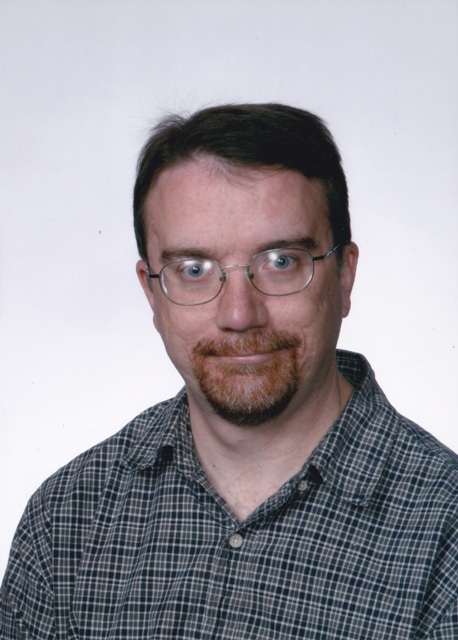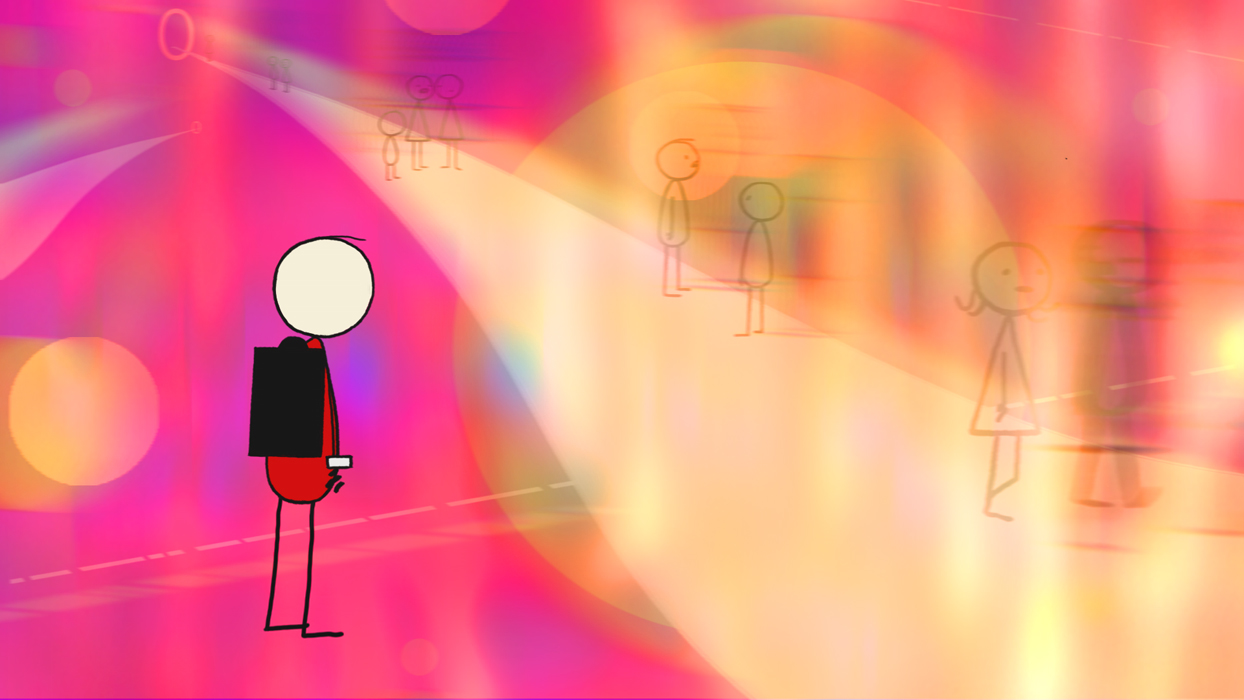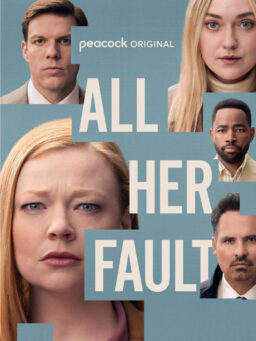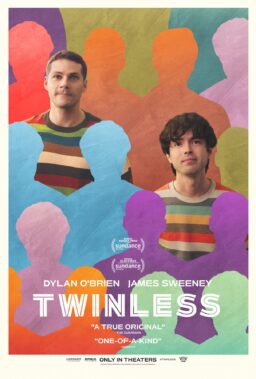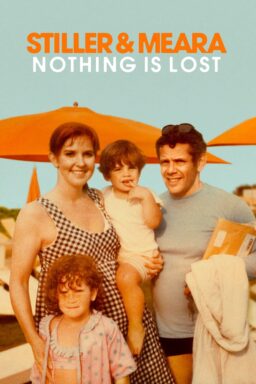(Note: This month’s Short Film is available as a $4.99 rental and $8.99 download on Vimeo)
I usually have to watch one of Don Hertzfeldt’s “World Of Tomorrow” episodes at least three times before I can even begin to know where to start writing about it. These short films are jam-packed with profound ideas based in science fiction, philosophy and grief, all while lampooning future technologies, satirizing class differences and coming up with new kinds of robots that will break down and catch fire. They involve time travel, A.I., cloning and the character getting a tour of this surreal landscape is usually a lovable little tyke named Emily Prime.
Until now, that is.
More on that in a second, but you see how much there is to unpack here? It’s like that every time and it’s one of the reasons I still do this column. A short film like this can have a wealth of ideas to ponder for days while many features can be forgotten in mere seconds. Hertzfeldt’s work can only be digested fully with repeat viewings and each has its own reward. “World Of Tomorrow Episode Three: The Absent Destinations of David Prime” is no exception.
So, yes, this episode does not involve little Emily, but rather David, her romantic other half from the first film. We first see David resting comfortably in some kind of relaxation contraption, flipping through ads for things such as human gills and death bed memories. As in the first two films, there comes an interruption from the mainstay of this series, an older, cloned Emily Prime (voiced by Julia Pott), who has searched through time to find him and implant a memory of her into his mental hard drive. He must delete space from his brain to make room for this memory and the information in it, which causes him to lose certain basic motor functions. From there, the episode takes on story elements that might remind you of “Eternal Sunshine of the Spotless Mind,” “12 Monkeys” and “The Terminator.”
Yeah, it’s dense, but it’s also, as always, frequently profound and very, very funny. Hertzfeldt’s work is made up of Gilliam-esque comedic asides, often having to do with technology that hasn’t been properly tested yet, but is used anyway. It speaks to our need for efficiency in the face of common sense. Robots are designed to carry on the likeness and memories of our loved ones, but the results are truly horrifying, providing the films with many doses of dark humor. The pop-up ads that come with this discount form of time travel is one of the series’ funniest gags.
Without the presence of little Emily spouting off lovable nonsense (except for one sequence, which I will not give away), you would think some of the magic would be lost, but that is not so. Hertzfeldt’s work moves at such a pace, you’re not given much of a chance to notice her absence and the way in which he expands the universe here makes for some truly hypnotic eye candy. At the same time, the visual splendor comes with some of the series’ darkest moments. Not all is whimsical and comic this time around. The soul sickness and sense of longing that permeated the first two episodes has remained, but here we also have an element of danger.
One day, I will watch all three in a row, but the first “WOT” remains my favorite short film of all time. The second film is also a joy to behold. As the series unfolds, Hertzfeldt has created a space and time odyssey that will endure long after we’ve figured out how to make discount clones of ourselves. By the end, even as our own present-day technology consumes us, we’re still lucky to be alive, living outside our stasis tubes, unaware of the outer-net. We may not believe it when we look at the world of today, but I still believe Emily Prime when she says, “Now is the envy of all of the dead.”

Q&A with writer, director, animator Don Hertzfeldt
Last time I interviewed you (for the first film), you weren’t sure “World Of Tomorrow” would ever become a trilogy the same way “It’s Such A Beautiful Day” did, and well, here we are. Do you look at these three films as one whole piece or is there something different about this collection for you?
I’ve always had a vague plan for there to be several of these, so I’m afraid the series is still just getting started. I just wish I could churn them out faster. “World Of Tomorrow” feels less contained to me than “It’s Such A Beautiful Day,” so it seemed to make more sense to call them episodes instead of chapters. The “It’s Such A Beautiful Day” chapters have a pretty linear narrative, while an episode is maybe something that can jump around more freely and be more open-ended. Before Episode 2 (“The Burden of Other People’s Thoughts”) came out, for about five minutes I was really tempted to call it “Episode 7” and slowly release them all out of order. With all the time travel involved, maybe it won’t matter in the end what sequence people watch them in.
The visual landscapes here are more varied, detailed and complex than ever before. What went into the creation and the idea to expand this world in the way that you did?
The blue planet’s landscapes were created a lot of different ways, but it’s essentially still 2D animation and photoshop. I got a lot of mileage from photographing rocks in close-up and then building mountains and weird formations out of the textures. David’s ship, Zorgbot, and other props were built in a similar way—I’d take photos of rusted metal textures or engine parts, and then piece things together like a virtual model. The long black stems coming from the base of the floating apartment buildings are flashlights.
My girlfriend has compositing experience and helped a great deal at the end of the pipeline, with the addition of natural lighting effects and simulating a deeper camera space on the blue planet. Getting the lighting and atmospherics looking right for an abstract, yet somewhat photoreal landscape—that was meanwhile occupied by stick figures—was very strange and tricky. You can’t light it like a live-action movie and you can’t light it like a totally flat cartoon. We had to sort of navigate this narrow sweet spot: “does this look real? does this look too real?” Many of the landscape shots are only five seconds long but we tore through over twenty versions of them. At a certain point I leaned away from the logic of where light should fall if you were looking at a true 3D space, and moved more towards figuring out where the light just seems to feel right, maybe more like in a painting.
The first two episodes were really centered around conversations, so those characters spent a lot of time sort of passively wandering through memories, or inside of simulations. All their environments tended to move and change around them, while they were somewhat rooted in place. For episode three and looking forward, I really wanted to start pushing the characters into much more active roles, moving through different worlds and timelines and driving their own stories. We’ve set up this universe, so now let’s get out and start looking around.
Is there any idea of the future depicted in any of the three films that you’d like to see actually happen? If not for all mankind, for yourself personally?
One of the offers in David’s online shopping catalog is to “reclaim the missing half of your life!”, through some sort of vaguely horrific procedure that makes you “never sleep again.” For many years I might have signed up for something like that. I used to hate having to go to bed every night and losing all those hours. Going to sleep always felt so sad and wasteful. And for years I was also a terrible insomniac. But I’ve been making peace with sleep again.
Did you miss the collaboration with Winona Mae this time around?
I missed Winona in the editing room. If I was working on a particularly tricky scene that had pacing trouble in the first two episodes, it was a really helpful crutch to be able to cut to Emily Prime just saying something cute and hilarious. It was such an easy fix that it felt like cheating. On the other hand, when I was writing those episodes, I often felt a little tethered. I always had a very limited selection of candid audio of Winona to choose from, so I faced these constant puzzles of reverse-engineering to figure out how to fit her into the scripts I was trying to write. So for better or worse, Episode 3 was the first one that I was able to write totally freely.
I noticed you had plans to release all three films in a theatrical program, but that plan got derailed (in the usual way in 2020). Can you talk about how that was going to play out?
Yeah, while I sound like a broken record saying “it’s not a trilogy!” in every interview, the pre-covid theatrical plan was to release these three in theaters with a major distributor, since they do add up to just about feature-length. I animated a weird little introductory cartoon when I toured theaters with Episode 2 in 2017, so I thought I’d make a couple more of those to pad the three episodes out for a 2020 release. For a moment, it looked like it was going to be my most mainstream-ish theatrical release to date. So that was a drag. But on the bright side, Episode 3 sounds really great with headphones on the small screen. It’s a very epic sort of story but at the same time it feels oddly intimate to me and is somehow really well-suited for small spaces. For some reason I feel more comfortable thinking about someone watching it with headphones on a portable device in the dark than on a big nice TV set. That might just be because I’ve only ever seen it on computer screens myself.
What’s next for you?
I genuinely don’t know. Episode 3 took two years to make and I’ve resurfaced at such a strange time. In a normal year I’d be traveling right now with it, or at least be going to the dentist or something. There’s so much normal-life stuff you neglect when you’re in production that I can’t even really do now. So I’m sort of just looking forward to the winter and wondering when I’ll start writing again. But the not-knowing also feels pretty great.
